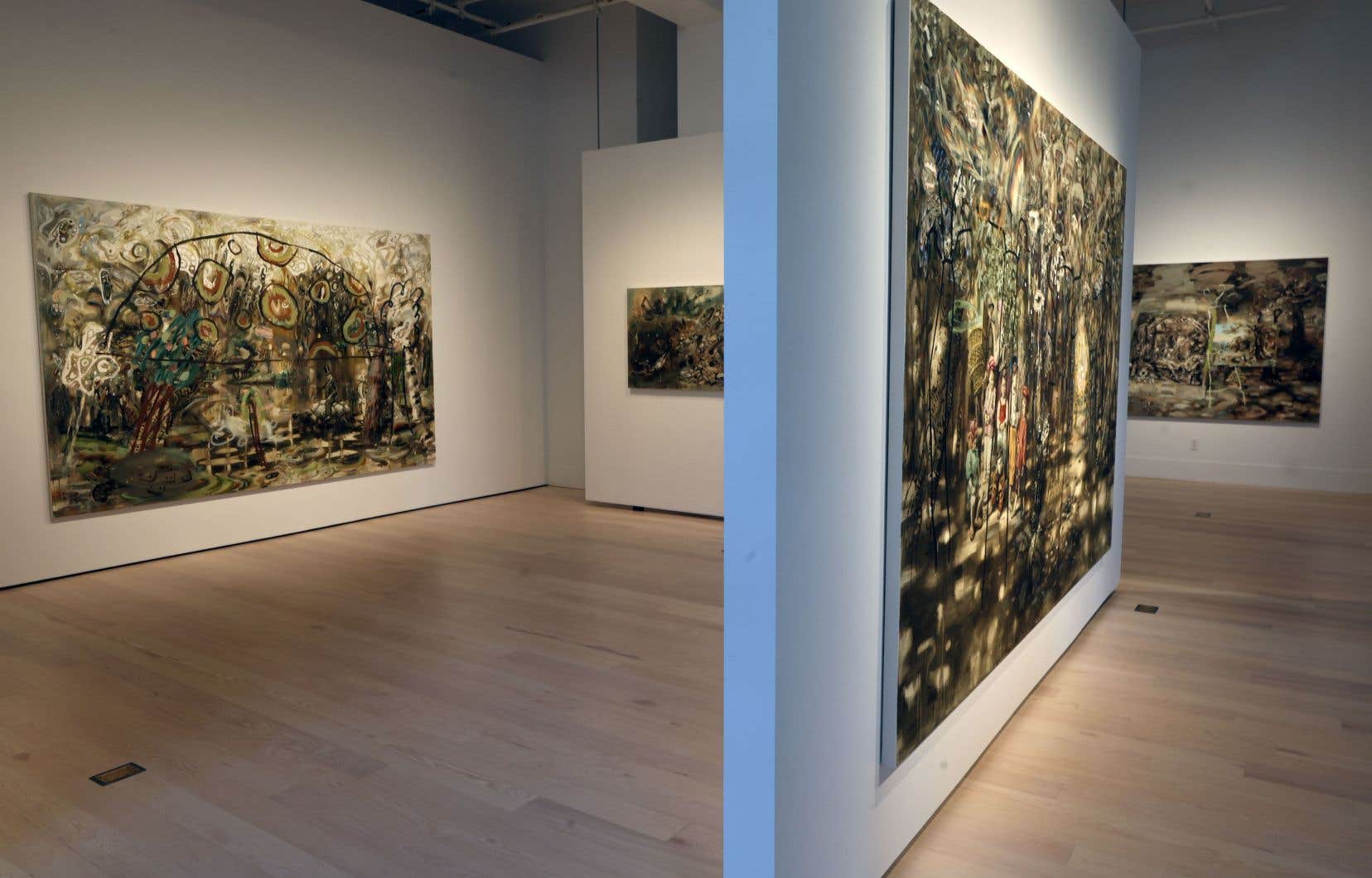It is neither an art gallery nor a museum. A bit of both, perhaps. Ten years after its founding in a century-old neoclassical-style building, 1700 La Poste has established itself as a unique place on the Montreal art scene. A unique creature worn by a patron of Belgian origin, who considers Quebec to be a “place of all possibilities”.
Isabelle de Mévius, rich heiress to a Belgian beer empire who founded the 1700 La Poste, gets excited when talking about this emblematic building on rue Notre-Dame Ouest, in Little Burgundy.
When we remind him of his stated desire in 2013 to create a place that is “neither a gallery, nor an art center, nor a museum,” his response is ready: “It’s a temple,” he says. she looked up at the ceiling – very high – of the vast square room with immaculate white walls.
The monumental columns of the facade, designed in 1913 by the architect David Jerome Spence, reinforce the impression of entering a sacred place.
“We practice both the museum aspect, because we present the works properly, and the gallery aspect, because we can sell here. But I don’t have a seller. People buy if they want to. They are free,” adds Isabelle de Mévius, met over the last few days for a visit to the exhibition. Re-enchantmentby Canadian artist Carol Wainio.
We practice both the museum aspect, because we present the works properly, and the gallery aspect, because we can sell here
This is the twentieth exhibition presented in this heritage gem, which first housed a post office. When Isabelle de Mévius acquired it in 2009, the place housed an antiques shop. It took four years of work, under the direction of the late “starchitect” Luc Laporte, to transform the building into a “temple” of painting, sculpture, photography and installation.
The imprint of an architect
Luc Laporte’s label can be seen everywhere in the immense central room. The touches of so-called “noble” materials — stone, steel, wood, plaster — recall other places imagined by Laporte: the L’Express restaurant, the Leméac, the Club Soda, the former Museum of Humor and its cabaret , the Society of Technological Arts…
The 1700 La Poste especially evokes the former Lux, on Boulevard Saint-Laurent, a legendary place also born from the imagination of Luc Laporte. The mezzanine, with its steel balustrade, echoes that of the Lux. It is not a coincidence. Isabelle de Mévius remembers the anarcho-intellectual spirit that animated the café-bar-bookstore on Boulevard Saint-Laurent.
“I almost bought the Lux, but I thought the rooms were too dark. When I was offered this building, I chose it because it is brighter and more in keeping with a cabinet of curiosities, because it is a temple,” she adds. The mezzanine has also been rebuilt “a bit like that of the Lux”.
Stories to tell
1700 La Poste took a few years to find its identity. Colleague Jérôme Delgado wrote in 2017 that the place “is slow to assert itself as an essential address in Montreal for contemporary art. Despite the money and the good will of its owner and director, Isabelle de Mévius, a real program is lacking.”
The exhibition Emptiness and dizziness represented at the time “a step in the right direction”, according to the critic of Duty.
Isabelle de Mévius believes today that the common thread of 1700 La Poste is to present artists with stories to tell. Artists highlighted in an exceptional place, each exhibition of which is supported by a beautiful glossy book and sometimes even by a film — all this without any public funds.
“When I like an artist, I am less in the conceptual and more in the narrative, in the search for the meaning of the work. That’s what attracts me. The artist is in her story when she comes to us. There is a story that is told, how she works, what she is interested in, what her influences are. I write him a bit like a person in a story. »
The exhibition Re-enchantment, by the painter Carol Wainio, who is on display these days, “tells the story of the hope that remains in our era of violence and climate change,” explains in good French the Ontario artist, who has been visiting Montreal for more than two decades.
His works are particularly inspired by the fables of La Fontaine and the tales of Perrault, including Tom Thumb Or Puss in Boots. The paintings showing children abandoned in the woods by their parents, a scene heralding difficult days, moved Isabelle de Mévius. Judging by the reaction of the people present during the passage of the Dutythe exhibition seems to touch some heartstrings.
